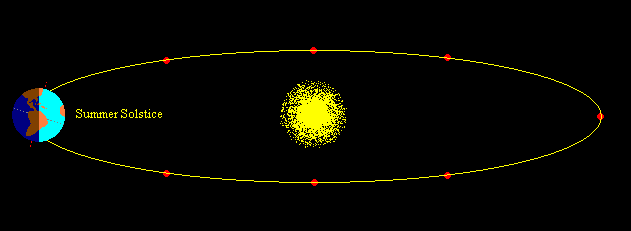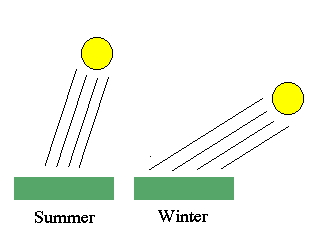The changing tilt relative to the sun (NOT THE STARS!) of the Earth's
rotational axis through out the year means that
different parts of the Earth are seeing differing amounts of direct sunlight.
Below is an animated gif, stepping the Earth through it's yearly orbit, and demonstrating
how the light from the Sun varies on it's surface:

The start of the animation (and the image seen if you are seeing this as a `still') is
when the Sun is seen at Northern Summer Solstice. If you were at a latitude of N23.5o,
the Sun would pass directly over head (through your zenith!). At our latitude, the
sun gets very high, but not quite passes through the zenith. All this direct sunlight
means we have much warmer days.
 Note in the `Summer' view, the light rays are closer together when they hit the surface.
They are more concentrated in the summer than the winter and heat the Northern Hemisphere
more effectively.
Note in the `Summer' view, the light rays are closer together when they hit the surface.
They are more concentrated in the summer than the winter and heat the Northern Hemisphere
more effectively.

